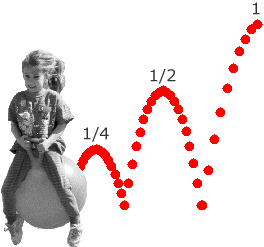 Just as it is important to be familiar with basic families of functions, it is also important to become acquainted with a few of the most commonly occurring types of sequences. Two of the most common are:
Just as it is important to be familiar with basic families of functions, it is also important to become acquainted with a few of the most commonly occurring types of sequences. Two of the most common are:
Arithmetic & Geometric Sequences
 Just as it is important to be familiar with basic families of functions, it is also important to become acquainted with a few of the most commonly occurring types of sequences. Two of the most common are:
Just as it is important to be familiar with basic families of functions, it is also important to become acquainted with a few of the most commonly occurring types of sequences. Two of the most common are:
Both types of sequences begin with some pre-designated starting value,
Thus, arithmetic sequences look like this:
a0 , a0 + r , a0 + 2 r , a0 + 3 r , ...
Geometric sequences look like this:
a0 , a0 r , a0 r 2 , a0 r 3 , ...
For example, the sequence:
7, 3, –1, –5, ...
is arithmetic with
The sequence:
7, 3.5, 1.75, 0.875, ...
is geometric with
Geometric sequences converge to 0 when Arithmetic and geometric sequences are common in application because they occur naturally in many situations that involve accumulation.
If something is accumulating (or disappearing) at a constant rate, then the quantity will describe an arithmetic sequence over equal intervals of time. Think of water in a reservoir being fed by a constant flow, or snow gently accumulating in a constant flurry.
If something is accumulating (or disappearing) at a rate that is proportional to the amount present, then the quantity will describe a geometric sequence over equal intervals of time. Think of a sequence of filters that each remove a certain proportion of pollutant in a waste stream, or radioactive decay.
![]()
![]()
Back to Contents